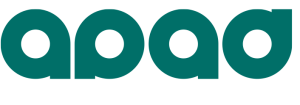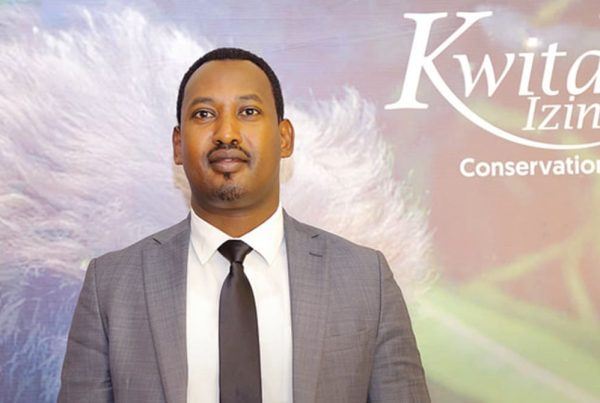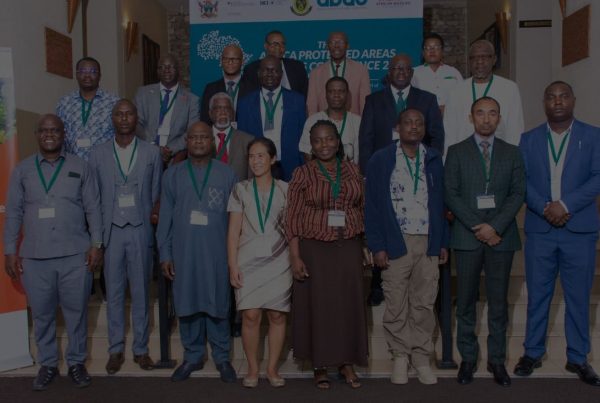As the Post-2020 Global Biodiversity Framework negotiations enter the second week in Geneva, Switzerland, representatives of the African Protected Area Directors (APAD) and the African Wildlife Foundation (AWF) shared A Pan-African Conservation Trust (A-PACT) as a solution, amongst others, for creating sustainable financial mechanisms for Africa’s Protected and Conserved Area network and systems. Negotiators from across Africa welcomed the concept, proposing it as a solution to the Convention on Biological Diversity (CBD). The experts commend the vision set out by A-PACT of ensuring sustained and sufficient financing for all of Africa’s protected and conserved areas as essential to achieving Africa’s development aspirations and key to implementing the Post-2020 Global Biodiversity Framework that is being negotiated.
The A-PACT concept emerged through preparations for the IUCN African Protected Areas Congress and in response to the challenges that protected and conserved areas of all kinds face with securing sustained and sufficient financing for operations, particularly in the face of the abrupt downturn of revenues from tourism that accompanied the global lockdowns to address COVID-19 health risks.
Africa has a third of the world’s biodiversity delivering significantly to global ecosystem services and benefits. Global experts estimate that financing biodiversity will take between US $722 billion to US $967 billion annually. But while Africa’s protected area estate covers 6 million sq. kilometers and encompasses over 8,500 properties, nearly all face severe or significant budget shortfalls on a regular basis. Investing US $6.7 billion annually in this backbone of natural infrastructure on the continent, as A-PACT sets out to do, would transform them into engines of growth and prosperity for Africa’s growing population.
African civil society is also calling for transformative change to the way biodiversity is financed across the continent. The African CSOs Biodiversity Alliance (ACBA) notes that the financial resources mentioned in target 19 of the first draft of the Post-2020 Global Biodiversity Framework are not enough to close the financing gap globally (estimated at US $700 billion), nor does it address the financing gap for developing countries. What we are calling for is repurposing harmful subsidies worth at least US$1.9 trillion annually to boost the figure significantly closer to the amount that will make the positive change and impact we need within the next decade.
A-PACT will be launched in Kigali, Rwanda at the IUCN Africa Protected Areas Congress set to take place on July 18-23, 2022. The inaugural congress is set to bring together African leaders in government and civil society to shape an African vision for conservation that delivers to the development aspirations of the continent.
Following the resumed sessions of the 24th meeting of the Subsidiary Body on Scientific, Technical and Technological Advice, the 3rd meeting of the Subsidiary Body of Implementation, and the Open-Ended Working Group, Sikemi Sikeade Egbuwalo, the CBD National Focal Point for Nigeria, said: “Nigeria welcomes and supports this Africa-led initiative as one of the solutions to closing the biodiversity gap for Africa. It is good to see that the A-PACT is being put together as a mechanism for Africa’s protected and conserved areas.”
Experts have consistently warned that if conservation and management of protected and conserved areas are not adequately funded, we could reap catastrophic consequences for the ecosystems that sustain us and provide us with basic needs such as health, food, clean air, fresh water, and even shelter.
“It is amazing what we can achieve as Africans through dialogue and clarity of intent. This engagement demonstrates what Africa can achieve if we put our heads together to find sustainable solutions for financing protected and conserved Areas. Indeed, this is critical to maintaining ecosystem services for all. A-PACT is undeniably a transformative proposition by Africans for African protected and conserved areas,” reaffirmed Prof. Patience Gandiwa, Director and Technical Advisor International Conservation Affairs, Zimparks and Co-Chair of the APAD Financing Protected Areas Working Group.
Undoubtedly, novel financing and implementation solutions will be needed to address multiple issues, and experts and negotiators believe that A-PACT will propel the continent towards achieving these targets to match the long-term nature of biodiversity conservation and investment in societal resilience.
“It is critical that funding gets to where biodiversity conservation is yielding positive outcomes to people and nature. The fact that we are working towards ensuring the funds can be easily accessed to promote the agency of indigenous people and local communities as well as national actors and organizations, including women and youth, we are set to see a mindset shift at all levels of engagement,” Fred Kwame Kumah, AWF Vice President of Global Leadership emphasized.
It is our collective hope that this fund will reduce the dependency of Africa’s protected and conserved areas on foreign aid, making the continent less vulnerable to external unpredictable extremities such as pandemics that not only affect developing nations but also those that provide a substantial contribution towards foreign aid programs.




